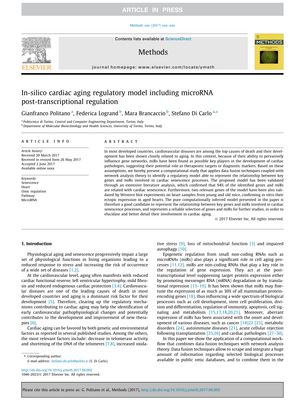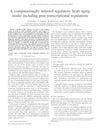In-Silico Cardiac Aging Regulatory Model Including MicroRNA Post-Transcriptional Regulation
June 2017
in “
Methods
”

TLDR Researchers created a model to understand heart aging, highlighting the role of microRNAs and identifying key genes and pathways involved.
In the 2017 study, researchers developed a computational model to understand the regulatory mechanisms of cardiac aging, focusing on microRNA (miR) post-transcriptional regulation. They integrated a large amount of biological data using data fusion techniques and network analysis, creating a network model that depicts the relationship between key genes and miRs in cardiac senescence. The model was validated through literature analysis and Western blot experiments on heart samples from young and old mice, confirming the altered expression of two significant genes in aged hearts. The study identified 191 differentially expressed genes, narrowed down to 152 human homologs, and mapped onto 7 KEGG pathways related to cardiac functions and aging. The integration of transcriptional and post-transcriptional information added 10 new nodes to the networks, and 35 central nodes were identified. The model's validation showed that 94% of the nodes had been previously reported in aging-related studies, with miR-4691 and miR-7113 highlighted for future research. The study also discussed the roles of identified genes and miRs in inflammatory responses, senescence regulation, and various cardiovascular disorders, emphasizing the complex network of post-transcriptional regulations by miRs on cardiac aging.
